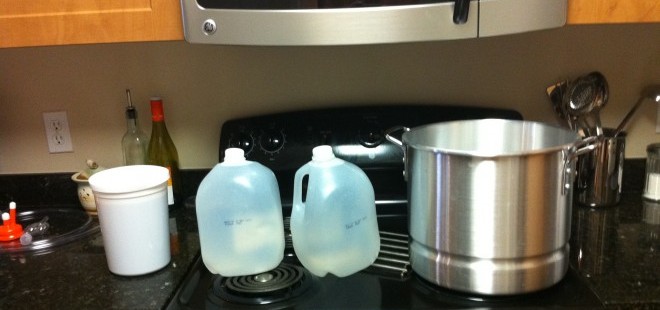Homebrewing: Timing is Everything
If its not clear from previous posts, I LOVE to homebrew. It’s an scientifically artistic process that creates things that I can share with friends and family and bring a community together. The past few weeks I have enjoyed being on vacation and realized how important timing is. My mind and body needed the relaxation and escape of vacation. It inspired me to write this piece Homebrewing: Timing is Everything.
Many of us have been in that situation before—trying to brew beer for a party last minute, or trying to repeat a good homebrew recipe just in time for the National Homebrew Contest entry deadline. And while these events are sometimes inevitable, its important to remember that brewers’ saying: brewers make wort and yeast make beer. Yeast is a living organism and needs time to work its magic. While altering fermentation temperatures and ingredients can shorten the time from grain to glass, it has the potential to drastically change the appearance, flavor and aroma of the finished product. If you can avoid it, never rush your yeast. At a minimum, let it rest for 2-3 days after it has reached terminal gravity, but preferably, longer if necessary.
I was recently reading a commercial clone recipe that read “once the measured gravity has reached 1.012, crash cool for 48 hours and keg or package.” This really spiked my blood pressure. Every brewer everywhere is going to make different beer. Water is likely not the same, quality and age of malt, yeast and hops is likely not the same. Fermentation will not be conducted identically. Virtually all aspects of brewing are completely variable. My beer is ready when I’m happy with it. I regularly sample my fermenting beer. While it does increase the risk for infection, (and I have to be absolutely meticulous with my sanitation regime) I like beer for the overall perception—aroma, flavor, color, mouthfeel, etc. My beer isn’t done until my perception of the beer is what I want it to be. If I was able to suggest an alternate statement on the clone recipe I referenced above, it would read “once the beer has reached terminal gravity (the gravity reading has stabilized and remained constant for ~3 days) AND looks, feels, smells and tastes the way you want it to, package the beer.”
Many things can be done between terminal gravity and packaging. One of them is timing. If a beer doesn’t quite taste right, let it sit on the yeast cake a little longer. I have had multiple beers that even after they reached terminal gravity, an extra week or two on the yeast cake helped to round out the flavors nicely. While there may be some science behind why this happens, it doesn’t really matter. The product wasn’t ready because I wasn’t happy with it and the extra time made a world of difference. I’ve also had the opposite happen. I was a little too creative with my spice additions in a jasmine and lavender IPA. It smelled like the most amazing floral bouquet on the planet! …but it tasted like grandmas bar of soap. Did it get packaged? Heck no, why waste the time cleaning and sanitizing more equipment to house a bad beer? I swallowed my pride and dumbed five gallons over my compost pile.
So you want to make that 12% Russian Imperial Stout? I can promise you that it will taste a lot better with time. The alcohol notes and harsh bitterness and astringency from the roasted barley will be much more enjoyable a year later. While it sucks to do it, be patient with your beers, try them at different ages and listen to your perception. Be proud of your product, after all, its your artwork and masterpieces take time.







Submit a Comment